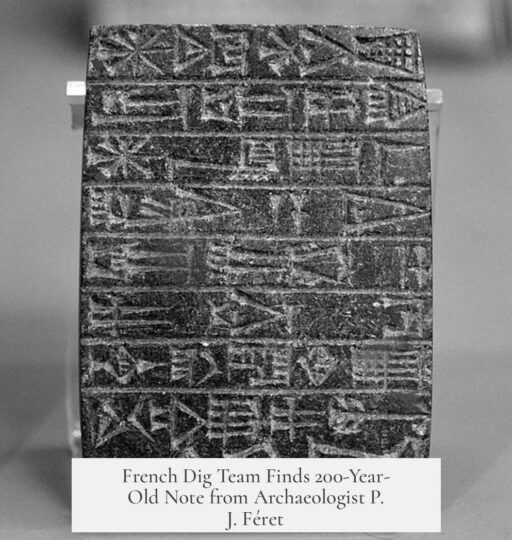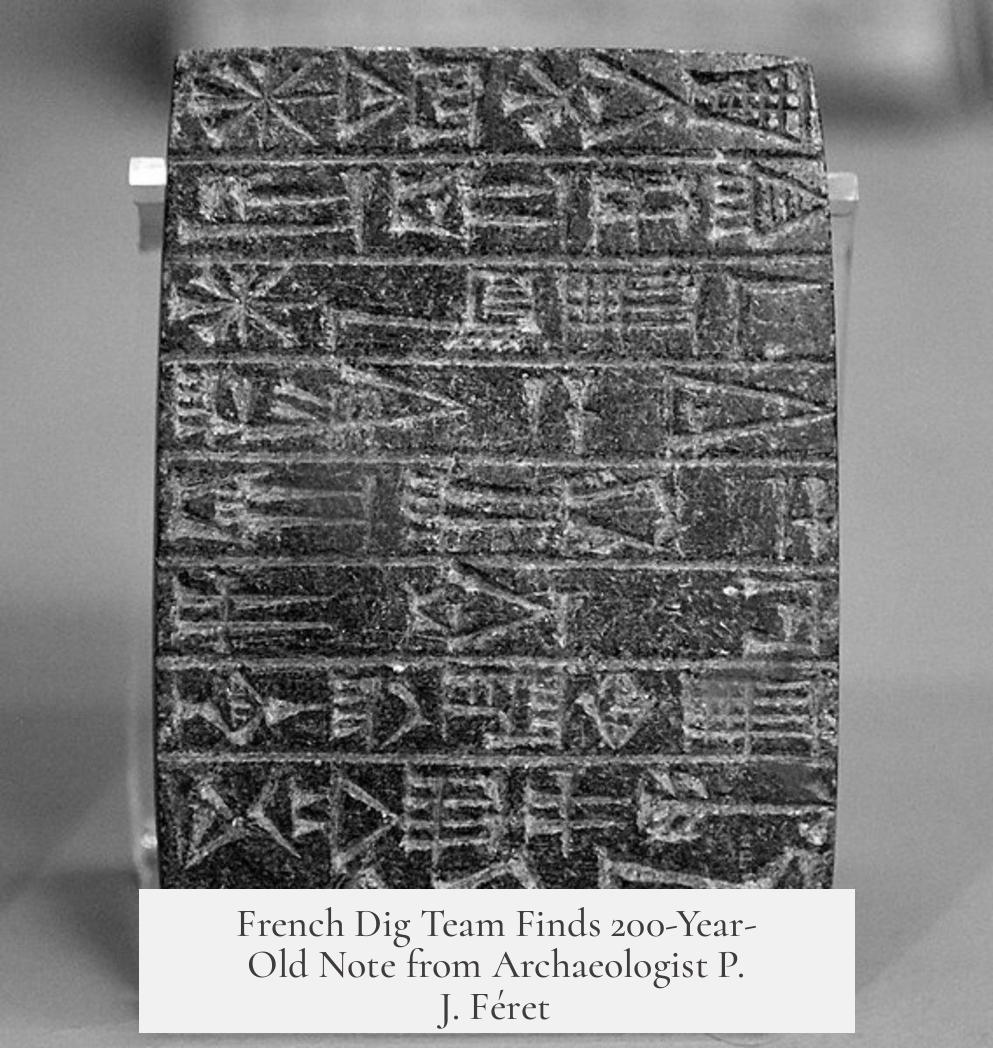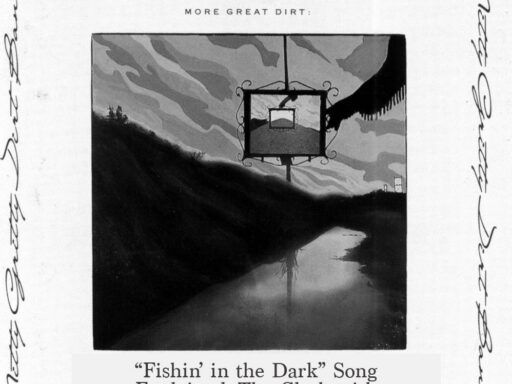A French archaeological team uncovers a 200-year-old note written by P. J. Féret, an early 19th-century archaeologist from Dieppe who excavated the area known as Cité de Limes or Camp de César in January 1825.
The note, discovered during recent digs near Dieppe, bears the following inscription: « P. J. Féret natif de Dieppe, membre de plusieurs sociétés sçavantes a fouillé ici en janvier 1825. Il continue ses recherches dans toute cette vaste enceinte appelée Cité de Limes ou Camp de César ». This translates to Féret stating he is a native of Dieppe and member of several scholarly societies who excavated there and continues his research within the large enclosure called Cité de Limes or Camp de César. The term “sçavantes” is an archaic spelling of the modern French word “savant,” meaning learned or scholarly, indicating Féret’s academic standing.
The note itself attracted attention not only for its historical value but also for the exceptional quality of Féret’s handwriting. Commentators noted the elegant spacing and calligraphy, emphasizing that the penmanship appeared carefully crafted, possibly taking the archaeologist considerable time. Such attention to detail suggests that Féret anticipated future viewers and treated the message as a lasting record.
This discovery adds tangible evidence to the history of archaeology in the Dieppe region and sheds light on early excavation efforts within a site historically known as the Camp de César, a term often associated with Roman military camps or ancient fortified settlements. Féret’s work marks one of the earliest scholarly pursuits in this area, connecting modern digs to their early 19th-century origins.
- Féret’s note serves as both a historical record and a testament to scholarly dedication in early French archaeology.
- The site, Cité de Limes or Camp de César, continues to hold archaeological significance.
- The handwriting is remarkably well-preserved and admired for its beauty and precision.
- Old French spelling like “sçavantes” provides linguistic context to the era’s written language.
For detailed accounts and further reading, the BBC article (link) and local French news coverage (link) offer comprehensive insights about the discovery. An automated translation is also available (translation link).
French Dig Team Unearths 200-Year-Old Note from Archaeologist P. J. Féret
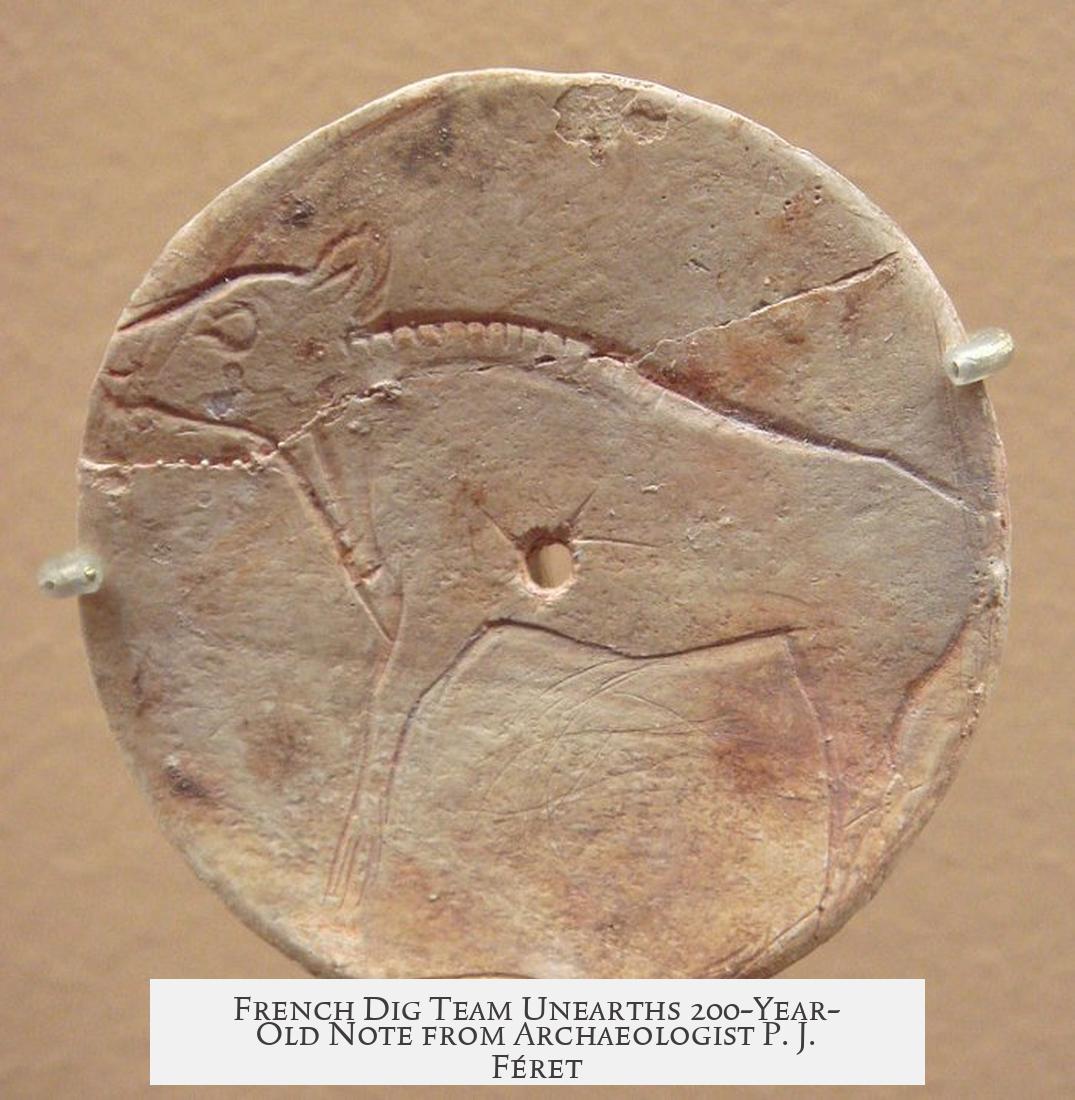
Imagine stumbling upon a piece of history so vivid, it feels like the archaeologist left you a handwritten letter from two centuries ago. That’s exactly what happened recently when a French archaeological team discovered a 200-year-old note penned by P. J. Féret, an explorer from Dieppe, during their excavation in the so-called Cité de Limes or Camp de César.
Before we dive deeper, let’s address the burning question everyone has:
What is this 200-year-old note about, and why does it matter?
The note, written by Féret in January 1825, briefly describes his excavation work and hints at the ongoing research efforts he undertook in a vast ancient enclosure. It’s a rare window into early 19th-century archaeology – plus, Féret’s handwriting is so stunning, it has wowed historians and enthusiasts alike.
The Unexpected Treasure—A Message from 1825
The freshly unearthed note reads (in French):
« P. J. Féret natif de Dieppe, membre de plusieurs sociétés sçavantes a fouillé ici en janvier 1825. Il continue ses recherches dans toute cette vaste enceinte appelée Cité de Limes ou Camp de César ».
Translated, it tells us that P. J. Féret, born in Dieppe and affiliated with several learned societies, excavated the site in January 1825 and was continuing his research across the broad enclosure known as Cité de Limes or Camp de César.
This note isn’t just some dry, dusty bit of paper. It connects us to Féret’s passion and curiosity two centuries ago. It also emphasizes the significance of the site itself, named evocatively after Roman camps. Was Féret documenting Roman ruins all those years back? The term “Camp de César” sparks thoughts of Roman legions, don’t you think?
Féret’s Sleek Penmanship Stuns Experts
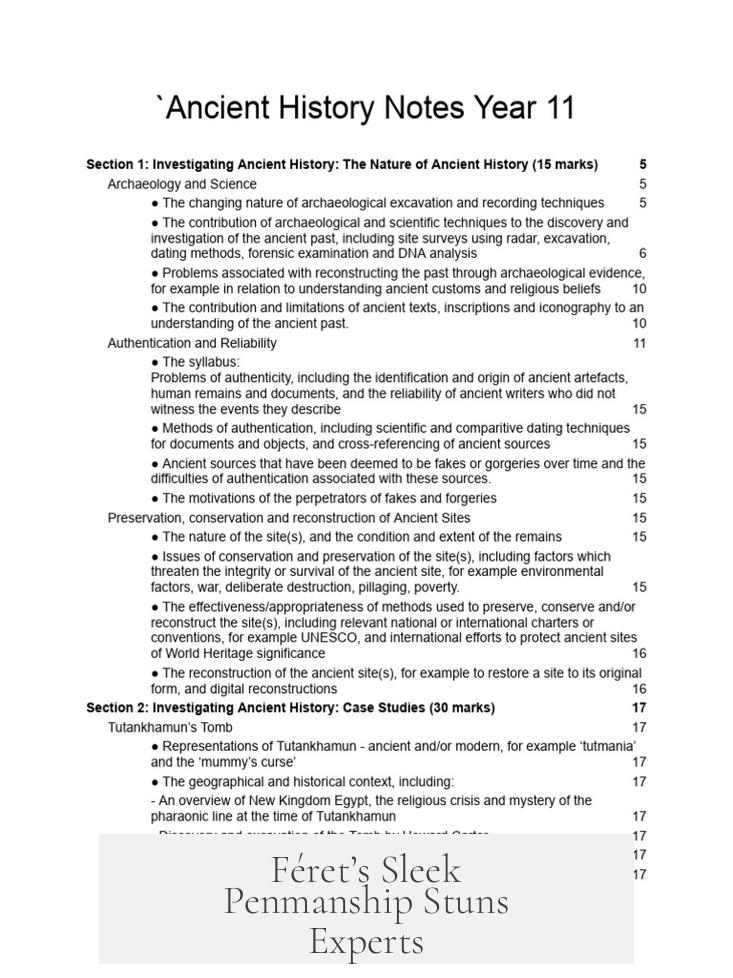
One of the most surprising details isn’t just what Féret wrote—it’s how he wrote it. Commentators and historians have widely admired the breathtaking penmanship on the note.
“Holy quill pen,” quips one enthusiast. “The spacing on those sentences is extraordinary. I bet this guy spent a whole day on this as the last thing he did before leaving. He knew it’d be seen by tons of people in the future, so he really went at it like a painting.”
Another admirer sums it up simply: “That’s the prettiest handwriting I’ve ever seen.”
In an age without typewriters or computers, handwriting was the prime means of recording discoveries. Not only did Féret capture invaluable archaeological information, but he preserved it in style. If you ever thought old notes were just scribbles, Féret’s note shatters that myth. This isn’t a rushed jott; it’s a masterpiece on paper.
A Glimpse into Language Shift: The Curious Case of “sçavant”
If you’re wondering about the word “sçavant” in the note, it might look odd today. It’s actually an old spelling for the more modern “savant,” meaning a learned or knowledgeable person. The transition in French spelling over centuries often changes how we view these writings at first glance.
This spelling brings an authentic historical flavor to the document. It’s like holding time itself in your hands, with words dressed in their 19th-century costumes. This linguistic tidbit helps historians date and understand the document in its true context.
Why This Discovery is More Than Just a Note
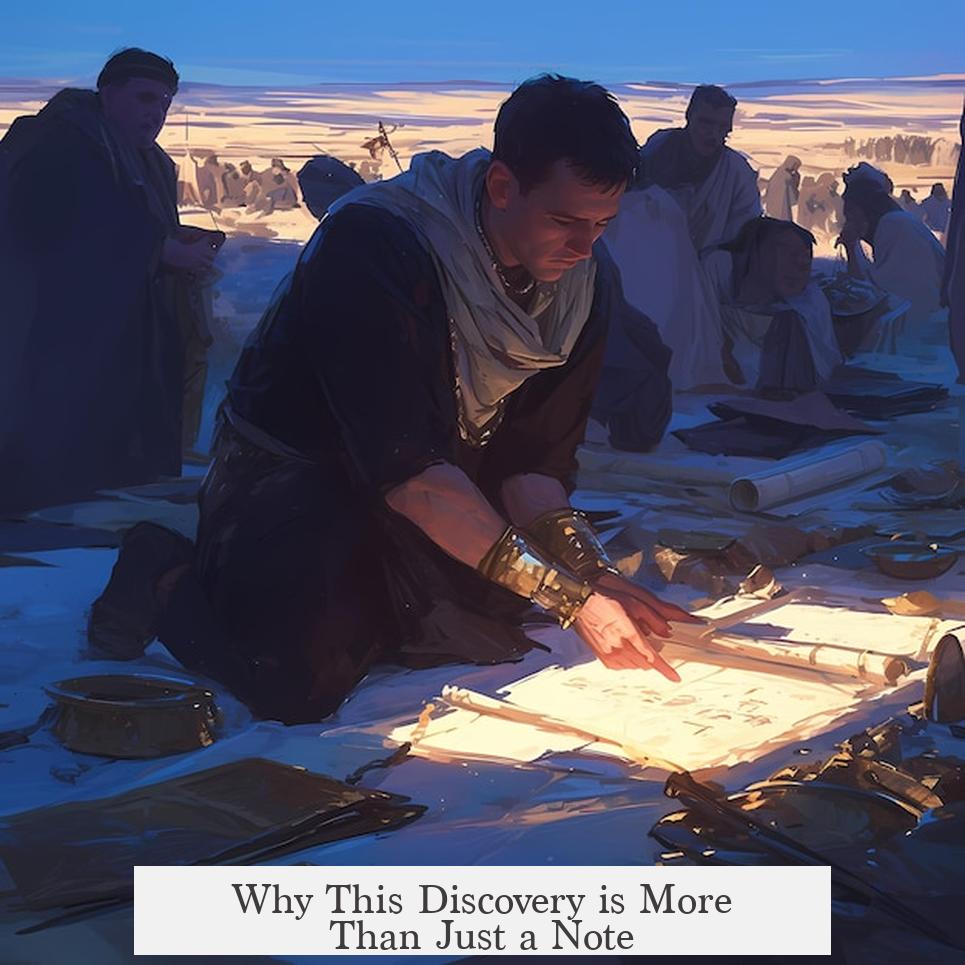
You might ask: “Is this note just a relic, or does it impact current archaeology?” Good question.
Discoveries like Féret’s note provide continuity in archaeological research. They remind modern scientists that their work builds on centuries of exploration. Sometimes, old notes contain clues or observations that modern tools might overlook or reinterpret. So, digging up this note is like uncovering a guidepost from the past.
Plus, it proves that even 200 years ago, inquisitive minds worked hard to uncover stories buried beneath the earth. They documented their work meticulously—something modern researchers can admire and aspire to.
Want to Learn More?
If your curiosity demands more details about this find, check out the BBC article covering the discovery. For French readers or those wanting original perspectives, there’s an excellent French article too. And if language is a barrier, try this handy auto-translation link to get the article in your preferred language.
Final Thoughts: Connecting Past and Present
In a world obsessed with high-tech gadgets, it’s refreshing to find value in a simple handwritten note found in the dust. Féret’s brief message from 1825 does more than tell us who dug here—it bridges nearly two centuries of curiosity. Also, it honors the art of penmanship and reminds us that the pursuit of knowledge is timeless.
Next time you see a neat note or a scribble, ask yourself: could it be the next big discovery for future archaeologists? Meanwhile, hats off to Féret and those modern diggers who preserved and revealed this gem. History loves company, especially when it’s written with such style.
